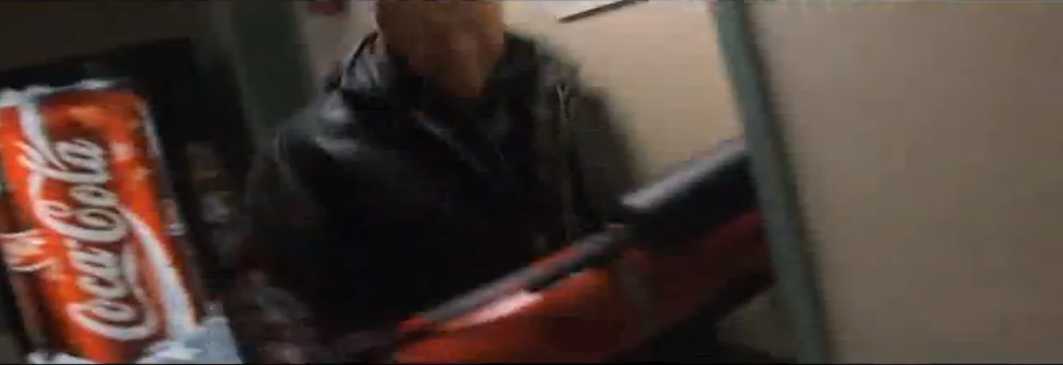
Workplace safety does not receive much
mainstream exposure. The vast majority of the U.S population does not
know what OSHA is or what it regulates. We’re intent on changing that.
In this post, we’ll analyze the $250 million dollar 90′s blockbuster
Enemy of the State and NBC’s The Office for OSHA violations.
A special thanks goes out to contributing safety expert Anne Evans for her assistance in creating this post.
(1998) Enemy Of The State, Supply Room Scene. CLIP ENDS AT 03:20


We can see that the hotel stocked their supply closet with a tray of lighters a few feet away from several gallons of cleaning solution marked as ‘FLAMMABLE’ in large red letters.

This is a clear violation of 1910.106(d)(5)(iii) which states:
Storage shall be prohibited except that which is required for maintenance and operation of building and operation of equipment. Such storage shall be kept in closed metal containers stored in a storage cabinet or in safety cans or in an inside storage room not having a door that opens into that portion of the building used by the public.While this discussion centers on OSHA regulation, NFPA 30 also has a lot to say about the use of storage rooms/cabinets, ignition source control (50 feet) and management of other hazards for flammable storage. A fire could result in both OSHA and Fire Marshal inspections.

Interestingly enough, the hotel did seem to comply to regulation 1910.106(d)(7)(i)(a) that requires a fire extinguisher near the entrance of the room:
"At least one portable fire extinguisher having a rating of not less than 12-B units shall be located outside of, but not more than 10 feet from, the door opening into any room used for storage."
They also complied with 1910.106(d)(7)(iii) which requires control of open flame and smoking. They posted signs to comply:
"Open flames and smoking shall not be permitted in flammable liquid storage areas."

At 3:17 there is a moment when storage is
very briefly visible within 18” of the ceiling in the storage room. In
this instance, the storage of materials so closely crowding the
sprinkler device could not arguably be far enough away from a sprinkler
head in such a small room as to allow adequate vertical clearance in
line with the Standard Interpretation of 1910.159(c)(10) and NFPA 30 3-2.3.2:
(2005-) The Office, Episode: “Boys and Girls”, warehouse scene. CLIP ENDS AT 00:24
Aisles shall be maintained to retard the transfer of fire from one pile to another and to permit convenient access for fire fighting, salvage, and removal of storage.
"Stunt driving and horseplay shall not be permitted."
As Michael had clearly not been trained to use the Forklift, his usage of the equipment violated 1960.10(a) which states:
Each employee shall comply with the standards, rules, regulations and orders issued by his/her agency in accordance with section 19 of the Act, Executive Order 12196, and this part which are applicable to his/her own actions and conduct.
Michael was clearly not competent to operate the forklift safely. Seeing as he is a branch manager and exhibits similar reckless and unsafe behavior on a regular basis, we can assume that management is not making a reasonable attempt to ensure that forklift operators are competent and trained which violates 1910.178(l)(1)(i):
The employer shall ensure that each powered industrial truck operator is competent to operate a powered industrial truck safely, as demonstrated by the successful completion of the training and evaluation specified in this paragraph (l).
Michael was able to seize the Forklift while it was running with the forks elevated. This indicates that the forklift was left unattended which violates 1910.178(m)(5)(i) through (m)(5)(iii) (paraphrased):
When a forklift is left unattended, load engaging means shall be fully lowered, controls shall be neutralized, power shall be shut off, and brakes set. If the forklift is only dismounted (operator within 25’ and within line-of-sight) the truck need-not be shut-off.Reprinted by Invitation from Compliance and Safety - We enjoy their work here at SaferWorkSite
Like this Blog Entry - Learn More Here: http://complianceandsafety.com/blog/oshavshollywood/

